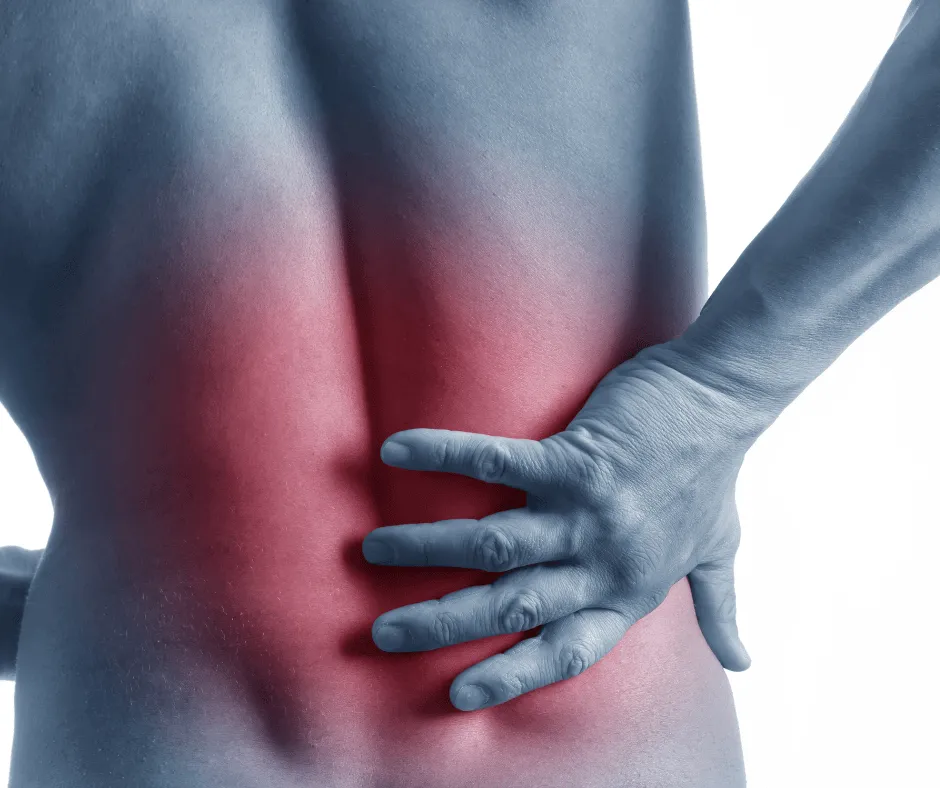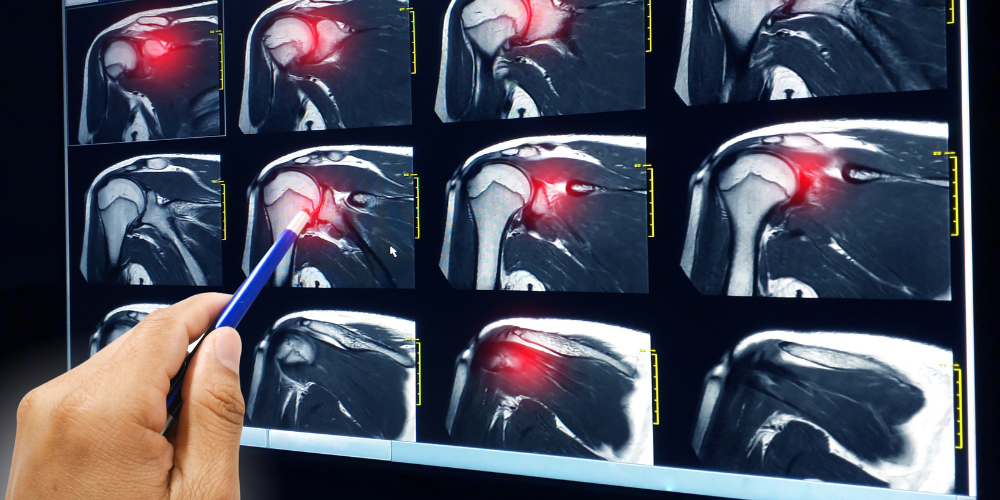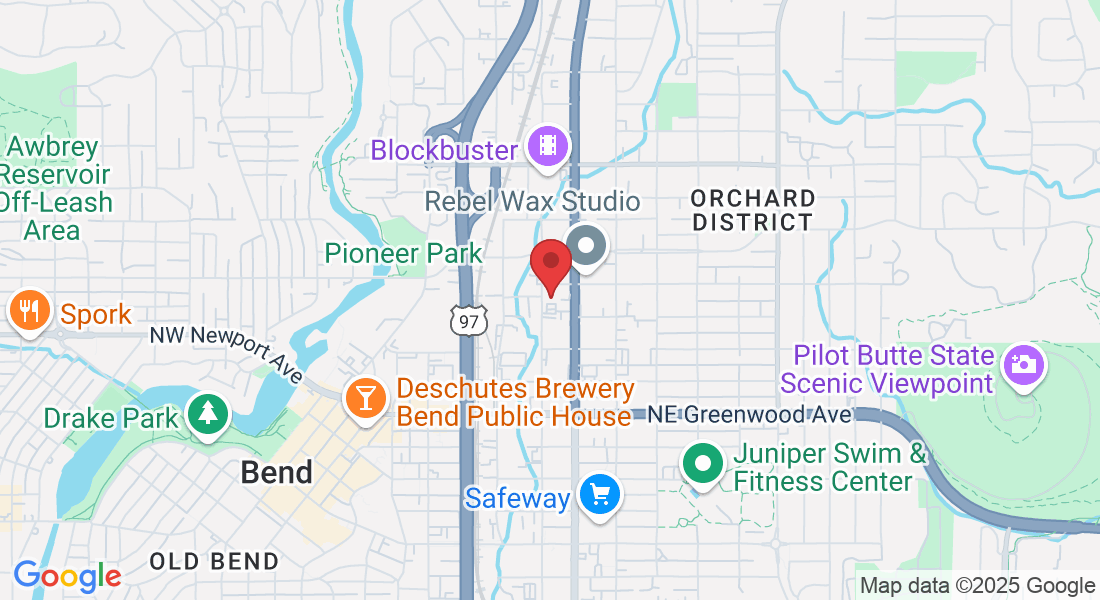Back Pain Relief
Reclaim Your Life, Free from Back Pain
Welcome to your journey towards freedom from back pain. One of the prevalent health issues in the United States is back pain, manifesting itself in various forms ranging from a persistent, mild ache to an abrupt, acute pain that might radiate down your leg. Back pain can be triggered by sudden incidents like accidents, falls, or lifting heavy objects, but it can also gradually develop due to age-induced changes in the spine. Sometimes, medical conditions such as inflammatory arthritis disorders are the culprits behind this pain.
Understanding the intricacy of back pain and its myriad causes, we at PhysioFit advocate for a multi-pronged approach to treatment. With each patient's unique path to relief in mind, we use evidence-based, fitness-centered physical therapy to offer personalized care. Our commitment is not only to alleviate your back discomfort but also to help you adopt measures that enhance your overall well being, thereby reducing the risk of chronic or prolonged pain, and enabling a swift return to your daily activities.
What You Should Know
Acute Back Pain: This is a sudden onset of discomfort that usually lasts from a few days up to a few weeks. Acute back pain is often the result of an accident or sudden physical strain.
Subacute Back Pain: This form of back pain can either come on abruptly or develop gradually over time, typically lasting from 4 to 12 weeks. It may be caused by an injury or overuse of the back muscles.
Chronic Back Pain: Characterized by discomfort lasting more than 12 weeks and occurring daily, chronic back pain may manifest quickly or slowly. It's often associated with degenerative conditions, such as arthritis or disc disease.
A proper diagnosis of a back problem involves a thorough evaluation from a professional.

The Most Common Causes of Back Pain
Back pain can emanate from a diverse array of factors, often intertwining and collectively leading to chronic lower back pain. These factors span mechanical or structural issues with the spine, inflammatory conditions, and other medical disorders. In some instances, it may even be challenging to pinpoint a definite cause for the onset of back discomfort.
Back pain may arise due to mechanical or structural irregularities within the spine, discs, muscles, ligaments, or tendons in the back, or due to nerve compression.
Sprains: These injuries affect the ligaments that provide support to the spine, connecting various bones together. Sprains often occur due to improper twisting or lifting.
Strains: These refer to injuries to a muscle or tendon, which can lead to significant back pain.
Degenerative disc disease: Aging leads to a gradual breakdown of the discs situated between the vertebrae of the spine. This condition is often associated with other degenerative spinal changes, such as arthritis or spinal stenosis.
Herniated or ruptured discs: These conditions occur when a disc compresses and irritates adjacent nerves, usually at the lumbar level but it can also affect the cervical spine.
Spondylolisthesis: This condition is characterized by a vertebra in the spine slipping out of its place or slowly misaligning.
Fractured vertebrae: Fractures of the spinal bones can be a significant source of back pain.
Scoliosis or other congenital changes to the spine: Birth defects and developmental abnormalities like scoliosis can lead to chronic back discomfort.
Myofascial pain: This condition refers to the tightness and pain in the muscles supporting the spine, which could result from muscle damage or from nerve input to the muscles originating from the spine.
As for inflammatory conditions, they also play a significant role in back pain:
Ankylosing spondylitis: This is a specific type of arthritis that affects the spine, causing stiffness and discomfort.
Other Medical Conditions that can cause back pain:
Osteoporosis, Fibromyalgia, Kidney Issues, Endometriosis, Spinal Infections, Tumors, Pregnancy.
Remember, if you resonate with any of the symptoms or conditions mentioned, we highly recommend making an appointment with us for a thorough evaluation and personalized treatment plan.
Proactive Steps for Back Pain Prevention
It's possible to avoid back pain resulting from excessive use or incorrect body movements. Here are some guidelines to foster a healthy back and promote a wholesome lifestyle:
Regular Exercise for a Strong Back: Engage in consistent exercises that fortify your back muscles. Balance-enhancing and strength-boosting activities, like yoga or tai chi, reduce the risk of falls, subsequent back injuries, and bone fractures. Always remember to warm up before any physical activity.
Nutrient-Rich Diet for a Robust Spine: Adopt a healthy diet packed with ample amounts of calcium and vitamin D, the essential nutrients for maintaining spinal strength.
Maintain a Healthy Weight for Stress Reduction: Keep your weight in check. Excess weight can exert unnecessary and harmful stress on your back.
Good Posture for Back Support: Embrace good posture, refraining from slouching. Ensure your back is well-supported while sitting and standing.
Safe Lifting Techniques for Injury Prevention: Evade lifting heavy objects as much as possible. If you have to, rely on your legs and abdominal muscles, not your back.

Common Symptoms of Back Pain
Escalated discomfort when executing lifting or bending movements.
Intensifying pain during rest periods, sitting stances, or when standing.
Rigidity in the morning upon waking, coupled with diminishing back pain upon engaging in activities.
Pain that travels from the back to other areas such as the buttocks, leg, or hip.
Discomfort in your neck, arm, or back
Recurring episodes of back discomfort.
Remember, if you resonate with any of the symptoms or conditions mentioned, we highly recommend making an appointment with us for a thorough evaluation and personalized treatment plan.
Please Note: The information provided on our website is intended for general education and is not a substitute for professional medical advice. Each individual's situation and body is different. Therefore, what may work for one person may not work for another. We care about your well-being and advise you to reach out to us to discuss your specific needs before implementing any advice from our website.
Your Source for All Things Physical Therapy in Bend Oregon
The PhysioBlog

Shoulder Pain Relief: Physical Therapy Provides Options for Avoiding Rotator Cuff Injuries
Understanding Shoulder Pain and Rotator Cuff Injuries
Please Note: The information provided on our website is intended for general education and is not a substitute for professional medical advice. Each individual's situation and body are different. Therefore, what may work for one person may not work for another. We care about your well-being and advise you to reach out to us to discuss your specific needs before implementing any advice from our website.
Introduction
Shoulder pain is a common complaint that can stem from various causes, one of the most prevalent being rotator cuff injuries. These injuries can significantly impact a person's quality of life, making daily tasks challenging and limiting physical activities. In Bend Oregon, the PhysioFIT physical therapy clinic is dedicated to helping individuals manage shoulder pain and prevent rotator cuff injuries through our “fitness-centric” physical therapy approach.
Understanding Shoulder Pain
Shoulder pain can arise from various conditions, including arthritis, bursitis, and tendonitis. However, one of the most common sources of shoulder pain is overuse or some trauma leading to a rotator cuff injury. The rotator cuff is a group of muscles that stabilize the shoulder joint by maintaining proper congruence and motion between the scapula and humerus. When these tissues are damaged, it can result in severe pain, weakness, and limited mobility.
According to Healthline, shoulder pain affects millions of Americans each year, with rotator cuff injuries accounting for a significant portion of these cases. These injuries can severely impact an individual's ability to perform daily activities and maintain an active lifestyle.

What are Rotator Cuff Injuries?
Rotator cuff injuries typically involve damage to the tendons, which can occur due to acute trauma, such as a fall, or chronic wear and tear, often resulting from repetitive overhead motions.
According to the Mayo Clinic, rotator cuff injuries are common and increase with age. These injuries can cause a dull ache in the shoulder, disturb sleep, and make it difficult to perform activities that involve lifting the arm.
At PhysioFIT, we frequently treat patients with rotator cuff injuries providing pain relief as soon as possible. Our team of physical therapists uses a variety of techniques to alleviate pain, improve mobility, and strengthen the shoulder muscles to prevent further injury.
The Role of Physical Therapy in Shoulder Health
Physical therapy plays a crucial role in managing shoulder pain and preventing rotator cuff injuries. Physical therapists can provide personalized treatment plans that include pain management strategies, strengthening exercises, and education on how to avoid or improve the mechanics of movements that are associated with injury. It’s important to get a proper evaluation from a professional, so as not to further aggravate any potential injury that may be present.
At PhysioFIT, our physical therapists are experts in shoulder health and we don't want to prevent you from enjoying all that Central Oregon has to offer any longer than you have to. So we work closely with our patients to understand their specific needs and goals, and we develop customized treatment plans that aim to alleviate pain, improve function, and prevent future injuries. Our approach to treatment is holistic with a "fitness-centric" approach, considering the overall health and well-being of our patients in addition to their shoulder health.
Through physical therapy, individuals suffering from shoulder pain can gain relief and learn strategies to prevent future injuries. At our physical therapy clinic we are committed to helping our patients achieve optimal shoulder health and an improved quality of life. We won’t just mask the symptoms or put you through the motions, we want you back in action as soon as possible, equipt with the tools to prevent further injuries in the future.
Shoulder Pain and Rotator Cuff Injury Prevention
Prevalence of Rotator Cuff Injuries
Rotator cuff injuries are a common cause of shoulder pain and disability among adults. In fact, almost 2 million people in the United States visit their doctors each year due to rotator cuff injuries. These injuries can significantly weaken your shoulder, making many daily activities, like combing your hair or getting dressed, painful and difficult to do.
Rotator cuff injuries are more common in the dominant arm — the arm you prefer to use for most tasks. If you have a degenerative tear in one shoulder, there is a greater likelihood of a rotator cuff tear in the opposite shoulder — even if you have no pain in that shoulder.

Symptoms and Diagnosis of Rotator Cuff Injuries
The most common symptoms of a rotator cuff tear include:
Pain at rest and at night, particularly if lying on the affected shoulder
Pain when lifting and lowering your arm or with specific movements
Weakness when lifting or rotating your arm
Crepitus, or a crackling sensation, when moving your shoulder in certain positions
Tears that happen suddenly, such as from a fall, usually cause intense pain. There may be a snapping sensation and immediate weakness in your upper arm. Tears that develop slowly due to overuse may also cause pain and arm weakness. You may have pain in the shoulder when you lift your arm, or pain that moves down your arm.
To diagnose a rotator cuff injury, your doctor should discuss your symptoms and medical history, then examine your shoulder. They may also examine your neck to make sure that it is not the true source of your pain, and to rule out other conditions.
Imaging tests, such as X-rays or magnetic resonance imaging (MRI), may be used to confirm the diagnosis. An MRI can show the rotator cuff tear, as well as where the tear is located within the tendon and the size of the tear.
Treatment Options for Rotator Cuff Injuries
The goal of any treatment is to reduce pain and restore function, we can do this in a multitude of ways, including manual therapy. There are several treatment options for a rotator cuff tear, and the best option is different for every person. In planning your treatment, your doctor or health professional like a physical therapist will consider your age, your activity level, your general health, the type of tear you have, as well as functional impairments.
Nonsurgical treatment options may include rest, activity modification, nonsteroidal anti-inflammatory drugs (NSAIDs), strengthening exercises and physical therapy, and steroid injections.
Physical therapy, such as the services provided by PhysioFIT, a leading provider of physical therapy in Bend, Oregon, can be particularly beneficial. Specific exercises can restore movement and strengthen your shoulder, relieving pain and preventing further injury.
In some cases, surgery may be recommended, particularly if your pain and function does not improve with nonsurgical methods or if you are very active and use your arms for overhead work or sports.
Preventing Rotator Cuff Injuries
Preventing rotator cuff injuries involves maintaining shoulder health and strength. This can be achieved through physical therapy techniques and proper warm-up before physical activities.
Physical therapy, such as the services we provide at PhysioFIT, can help to promote function, mobility, and range of motion, reducing the risk of rotator cuff injuries. Regular shoulder exercises can improve flexibility and endurance, further reducing the risk of injury.
Conclusion
Rotator cuff injuries are a common cause of shoulder pain and can significantly impact daily life. However, with the right treatment and preventive measures, it's possible to manage the pain and prevent further injuries. Physical therapy, in particular, plays a crucial role in both treatment and prevention.
At PhysioFIT, we are committed to helping our clients optimize their shoulder health and prevent rotator cuff injuries. Our team of experienced physical therapists in Bend, Oregon, provide personalized treatment plans tailored to each individual's needs. We believe that it's easier to stay healthy than regain lost capacity post-injury, and we're here to guide you every step of the way.
Remember, it's important to not just seek medical advice or physical therapy care if you're experiencing shoulder pain or suspect a rotator cuff injury. Prevention or early treatment can prevent your symptoms from getting worse,get you back to your normal routine quicker, or even prevent the injury from occurring in the first place.
Please Note: It's important to note that any exercises that are shared should be performed under the guidance of a qualified physical therapist in bend to ensure correct technique and to prevent injuries. A physical therapist can provide a customized exercise program based on the individual's fitness level, goals, and any existing injuries or conditions. If you’d like to explore this more or would like to schedule a time with a physical therapist, contact us atPhysioFITBend.com
Copyright PhysioFIT 2025 . All rights reserved


